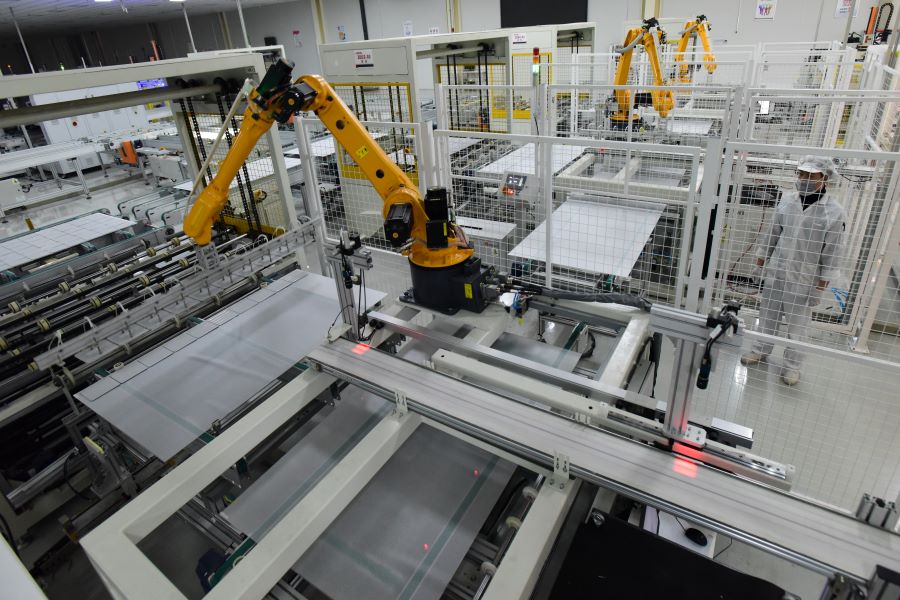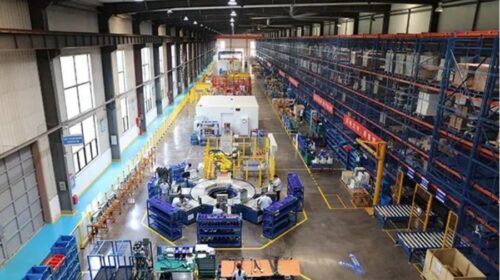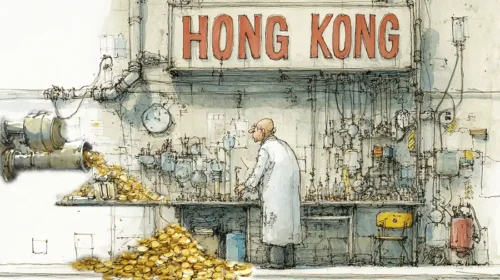Daqo New Energy Suffering from Year-End Hiccups, or Longer-Term Solar Indigestion?

Polysilicon maker reports demand was returning to normal in the first quarter, following sharp unexpected year-end slowdown
Key Takeaways:
- Daqo New Energy said its main operating unit expects to post 75% sales-volume growth for the first quarter, reversing a sharp unexpected contraction in the fourth quarter
- Company’s stock has rallied nearly 40% over the last two-and-a-half weeks, but remains significantly undervalued compared with peers
By Doug Young
Polysilicon maker Daqo New Energy Corp. (DQ.US) has been spewing out new data these last two weeks that paint quite a complex picture of the latest developments for its business, which in turn, reflects what’s happening in the global solar sector. It added yet another piece to the puzzle on Wednesday by releasing new data showing its sales appear to be picking up again after an unexpected sharp slowdown at the end of the year.
We’ll detail the highlights of this complex data pile shortly, most of which was contained in the company’s fourth-quarter financial results announcement last week. That announcement included a healthy dose of first-quarter guidance aimed at calming investors’ nerves about the unexpected fourth-quarter slowdown, as well as a surprise huge spike in its raw material costs.
The latest announcement this week for its similarly named China-listed unit, Xinjiang Daqo New Energy (688303.SH), looks like an extension of the earlier attempts at calming investors by saying the strange fourth-quarter developments were just temporary and things are returning to normal.
Truth be told, you would never know investors were concerned at all purely based on Daqo’s latest share price. The stock rose a modest 2% on Wednesday in New York after the latest announcement, extending a rally that has seen it rise nearly 40% over the last two-and-a-half weeks. About half of those gains came in the two trading days after the company announced its fourth-quarter results on Feb. 28.
We’ve argued for a while now that Daqo looks quite undervalued, following steady declines that have seen its shares lose nearly half their value over the last 52 weeks, even after the latest rally. The weakness is all the more unusual when one considers the company’s profit soared last year on a huge jump in prices for the polysilicon that is its bread-and-butter product.
Even after its recent rally, the company’s stock trades at a meager forward price-to-earnings (P/E) ratio of just 3, about half the 6.5 for Hong Kong-listed rival GCL-Poly Energy (3800.HK) and a quarter of the 11 for Germany’s Wacker Chemie (WCH.DE). Then there’s the China-listed Sichuan Tianwei (688511.SH), which has a sky-high trailing P/E of 28.
The Achilles heel dragging Daqo down appears to be its base in China’s Xinjiang region, which has become a focus for western countries that have accused China of labor-related and other abuses in the region. The U.S. even singled out Daqo for sanctions last year, though the company has said it’s unlikely to be affected since most of its customers are in China. What’s more, the company is also building a massive new production base in the less controversial Inner Mongolia region nearby.
With all that bigger background in mind, we need one last bit of recent industry background first to give a bit of context to Daqo’s latest pile of data. That involves a huge jump in polysilicon prices over the last year, which has helped Daqo and its rivals post huge profit gains. In its latest quarterly report, Daqo says its polysilicon prices reached $33.91 per kilogram in the fourth quarter – roughly triple the $10.79 per kilogram just a year earlier.
Strange quarter
With all that stage-setting in mind, we’ll spend the second half of this space looking at the unusual signals coming from Daqo’s fourth-quarter report, as well as all the nerve-soothing the company has been trying to do both then and with the latest update this week.
Two elements in that report both looked like big causes for concern at first glance. The first came in the company’s polysilicon sales, which plunged by nearly half to just 11,642 MT in last year’s fourth quarter from 21,183 MT in the third quarter. The weak sales were a direct result of plunging demand, and not production issues, as the company noted its actual polysilicon production for the quarter was a far higher 23,616 MT – meaning half of its output for the period went unsold.
“End-of-year seasonality impact combined with downstream inventory adjustments, led to a temporary reduction in demand when our customers in the wafer sector reduced their own raw material and product inventory levels and temporarily lowered their utilization rate,” said CEO Zhang Longgen.
He went on to add the company believes the unexpected slowdown was “seasonal” and “temporary,” adding that “demand quickly resumed to normal levels” in January. What’s more, he said Daqo’s own inventory was back to normal levels by the end of January. Of course, the return to normal inventory level was probably at least partly due to Daqo slowing down or even halting its own production to clear out all the inventory.
The second worrisome element was a huge spike in the price of silicon powder that is the main ingredient that Daqo uses to produce its polysilicon. Specifically, the price it paid for silicon powder in the fourth quarter jumped to $8.68 per kilogram, more than triple the $2.58 in the third quarter. Again, Zhang tried to calm investors by saying the jump appeared to be temporary, with prices declining sharply in January and falling back to between $3.50 and $3.60 per kilogram by the end of February.
The latest announcement this week appears to be more nerve-soothing, with the company saying its China-listed Xinjiang Daqo unit – which includes the bulk of the U.S.-listed Daqo’s assets – expects its first-quarter sales to rise about 75% year-on-year to between 37,000 and 38,000 MT. That would represent a huge turnaround from the U.S.-listed Daqo’s own fourth-quarter plunge and also a strong improvement from the 55% rise in its sales volume during the third quarter.
At the end of the day, only time will tell if these two big fourth-quarter surprises were hiccups or perhaps represent longer-term trends. The company would certainly like us to believe it’s all temporary, though the spike in silicon powder prices could point to a longer-term trend as the solar sector booms. Either way, Daqo’s stock still looks like quite weakly valued, even at after its latest recent rally.
To subscribe to Bamboo Works free weekly newsletter, click here






